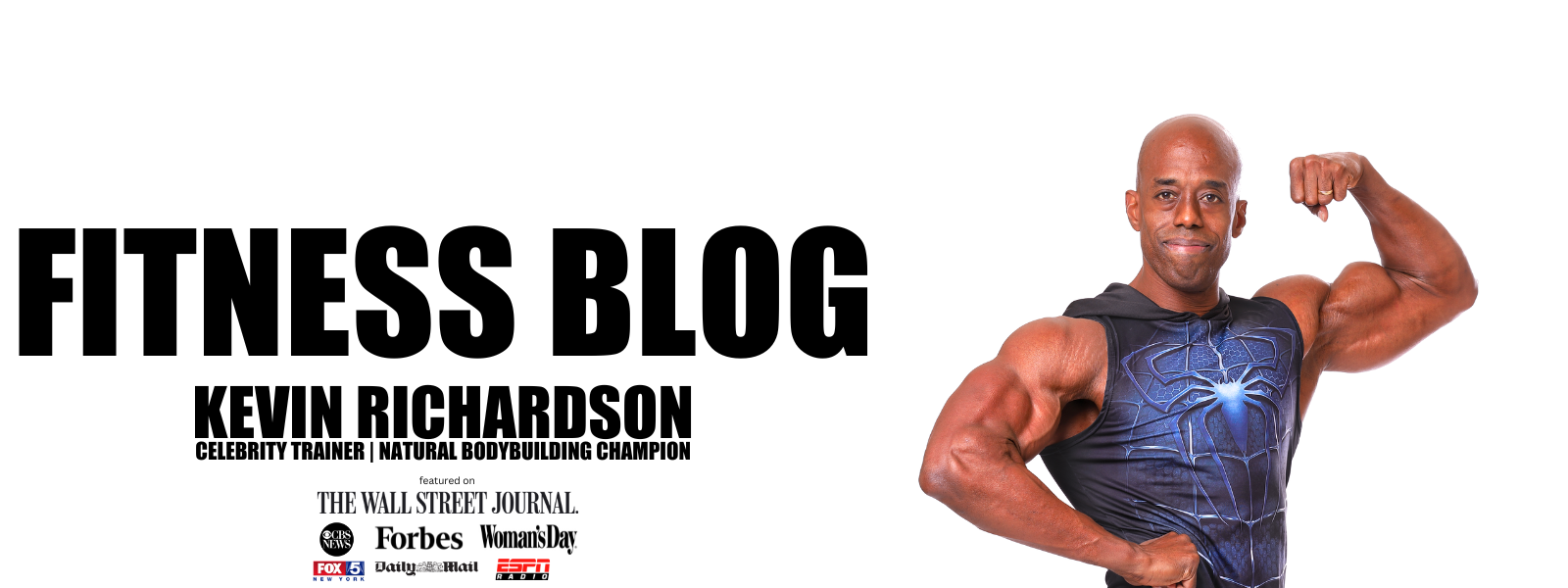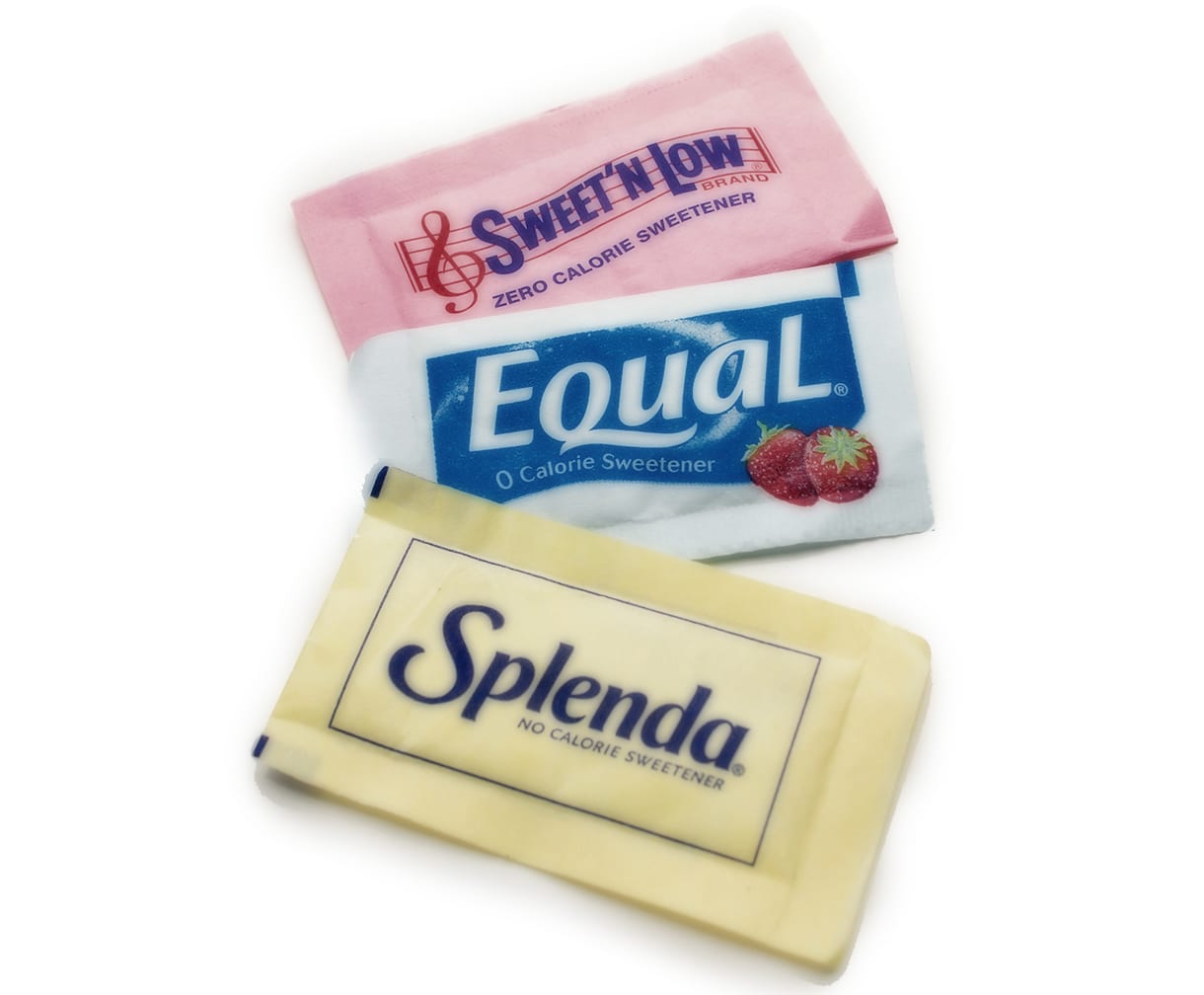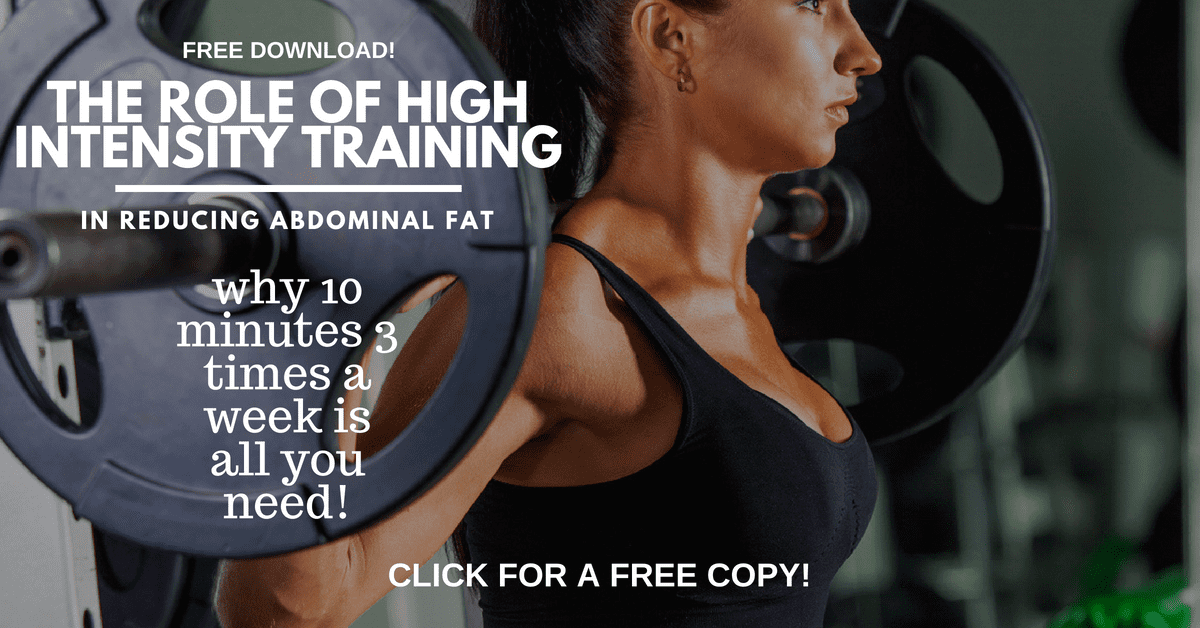5 Ways Artificially Sweetened Products Can Make You Gain Weight
Artificial sweeteners can make you gain weight and adversely affect your health. By no means are artificially sweetened foods new as artificial sweeteners have been around since the late 19th Century when saccharin was accidentally discovered at a laboratory at Johns Hopkins University. What is new, is the overwhelming ubiquity of artificial sweeteners today and how they went from products marketed specifically to diabetics wishing to curtail their sugar intake to ‘healthy’ sugar alternatives for the health conscious and those focused on losing weight or maintaining their weight. Having been successfully marketed as a ‘health food’ with the terms ‘sugar free’ and ‘zero calorie’ now commonly equated by most members of the general public as being somehow healthier than the products they supposedly replace- artificial sweeteners have found their way into almost every diet related food product and supplement on the market. The past decade saw the production of over 6,000 new artificially sweetened foods and beverages[1]- and the usage of artificial sweeteners in products that never needed to be sweetened in the first place. From mouthwashes and breath strips, to children’s toothpastes, baby foods, protein powders, vitamin waters, energy bars, frozen foods and even over the counter pain medications. Not to mention their presence in low fat yogurt, gelatin, diet sodas, baked goods and beverages. In fact, surveys found that as of 2004 as many as 15% of the Americans use an artificial sweetener on a regular basis with as many as 65% of Americans buying at least one sucralose (Splenda) containing product in 2008.[2, 3] (Knowingly or unknowingly, I might add). We know that sugar provides a large amount of quickly absorbed carbohydrates that can easily lead to excessive calorie intake, which when used in excess (which is never that hard) can in turn cause weight gain and negatively impact blood sugar regulation. [4,5,6] The idea is that the lower calorie sugar free alternative that artificial sweeteners offer can be helpful for those trying to lose weight. The problem is that as much as these foods have been branded as healthy or appropriate for the diet conscious, there is nonetheless an alarming amount of research showing that even zero calorie beverages can make you gain weight and bring about metabolic dysfunction. The US Food and Drug Administration’s approval as being generally recognized as safe doesn’t speak to the potential for artificial sweeteners to bring about weight gain or increase the likelihood of metabolic disease as we must remember that trans fats were awarded the same approval when they came onto the market and like so many other food additives that proved to be harmful, it took decades before they were banned. In this article we will take a look at five ways that artificial sweeteners can make you gain weight and negatively affect your health. Thank you as always for reading and do be sure to share the article with someone who you think would benefit from it.
5 Ways Artificial Sweeteners Can Make You Gain Weight- Understanding How They Work
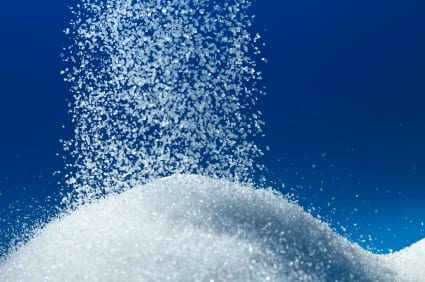
Before we delve into the five ways artificial sweeteners can make you gain weight, it’s first important to understand how they work. As of today there are five popular artificial sweeteners on the market that are approved for human consumption here in the United States- saccharin (Sweet N’ Low), aspartame (NutraSweet, Equal), acesulfame potassium (Sunett, Sweet One), sucralose (Splenda), which is currently the most popular and neotame- a new sweetener engineered by Monsanto to be as much as 7000-13000 times sweeter than sugar.[7] Also added to the list of non-nutritive sweeteners are steviol glycoside extracts or stevia- a highly processed product that is misleadingly marketed as being ‘natural’ because it comes from a plant- but knowledgeable consumers should note that high fructose corn syrup comes from a plant as well and that just because a product has natural origins certainly doesn’t make the final heavily processed product natural. All of these sweeteners, both artificial and non-nutritive have one thing in common- they are all several orders sweeter than sugar and when used as a sugar substitute they all negligible caloric values- a factor that makes artificial sweeteners sound very appealing to those trying to lose weight. To understand why they are so low in calories we have to look at the quantity used. Sugar (sucrose) is a carbohydrate and one gram contains four kilocalories (kcals) each. A 12 ounce can of soda on average contains about 32 grams of sugar (8 teaspoons) which works out to 128 k/cals. On the other hand, because the sweetening power of artificial and non- nutritive sweeteners are several hundred times that of sugar, the amounts required are miniscule enough that they add little to almost no calories to the foods they sweeten.[7] As an example, to replicate the same sweet taste of the 32 grams (8 teaspoons) of sugar in a 12 ounce can of soda, you only need 0.05 grams of sucralose since it’s 600 times sweeter than sucrose. An amount so small that it has far less than one kilocalorie of energy- and so you can transform a drink that gets it’s calories from its sugar content into one with a near zero calories.
This sounds like the perfect solution to our inherent sweet tooth, as all humans are instinctively drawn to foods with a sweet taste and unfortunately today most of the sweet tastings foods are the ones that are lowest in nutrients while being high in empty calories. Our human inclination towards sweet tasting foods is what stimulates us to suckle as infants and was a crucial aspect of our ability to choose foods best suited for our caloric and nutrient needs such as fruits and certain vegetables.[8,9,10] Today these naturally occurring foods make up but a sliver of the average modern diet in developed countries and it should be noted that as little as several hundred years ago, added sugar was not a regular part of the human diet. Instead it was a delicacy reserved for rich and royalty, and it is only fairly recently that the average citizen has had access to sugar sweetened foods.[30] Contrast this with 2.4 million years of our adaptation to a diet of sugars coming almost exclusively from fruits and vegetables- which are far lower in calories and unlike processed sugary foods- are naturally high in fiber that prevents any unnatural spikes in insulin production.[11] This idea of evolutionary discord is a recurrent theme in our current societal problems with obesity and metabolic disease. So as much as sugary processed foods are not natural parts of the human diet, artificial means of supplying that sweet taste are obviously even more foreign to our systems as there is no point in our existence when any of these substances would have found their way into our diet. As a result the idea of adverse effects from continued should hardly come as a surprise. [12,13,14]
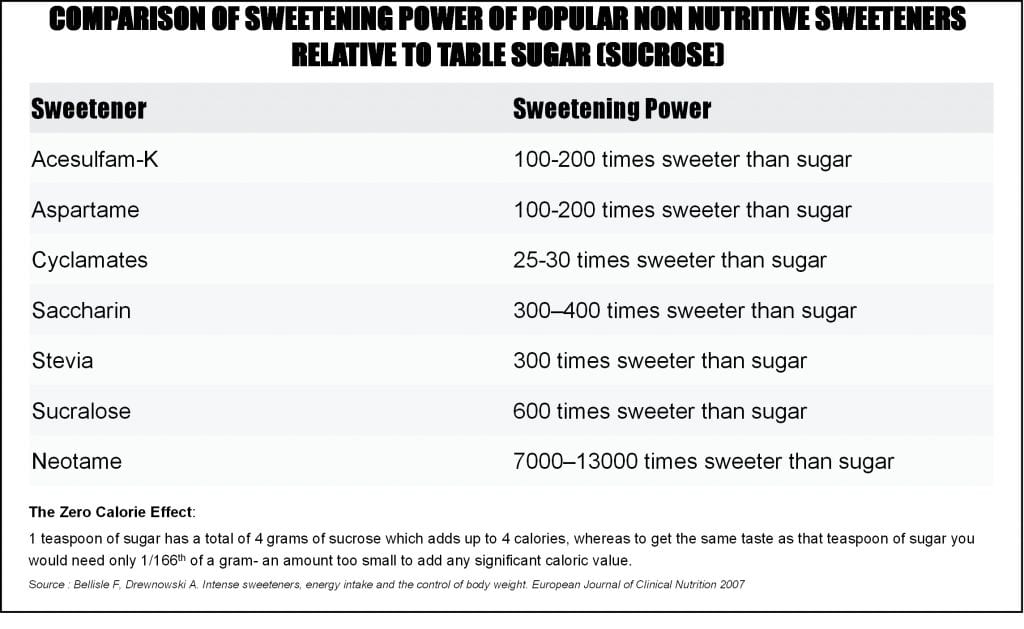
One important fact to bear in mind is that as much as artificial sweeteners have been branded as the perfect solution for those seeking to enjoy sweet tasting foods and drinks while cutting calories so as to lose weight, the years of calorie free sweeteners being a significant part of the American diet have corresponded with a decrease in obesity rates or improved health outcomes.[30] On the contrary, data from large scale observational studies show that they appear to have the opposite effect- as artificial sweeteners appear to dysregulate energy balance and may contribute to weight gain, obesity and metabolic disease.[12,15,17,18,19] Several studies have found that the more artificial sweeteners are regularly used, the higher the likelihood of increased weight gain-[15,16, 21, 22, 23, 24, 25, 26] and while other studies have had contrary findings[27,28], a hard look at the research linking non-nutritive sweeteners to increased weight gain is hard to ignore. That said, based on the studies available, here are five ways that artificial sweeteners may make you gain weight.
1. How Artificial Sweeteners Can Make You Gain Weight: The Incretin Effect
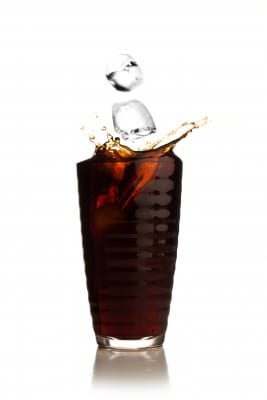
There are several biological and behavioral issues that may explain why a sugar free substance with few if any calories could elicit weight gain and increase likelihood of metabolic disease and one of them may be related to what is called the incretin effect. As we mentioned earlier, our bodies have evolved to associate a sweet taste with the presence of calories and so a sweet tasting food or drink sets in motion the same metabolic processes that high calorie sugary foods and drinks would in order to prepare for the incoming calories.[12,13,29] This metabolic shift leads to spikes in insulin levels as our bodies prepare to deal with a surge of sugars that never come- insulin spikes that in turn promote fat storage.[30] Incretins are a group of gastrointestinal hormones that increase insulin secretion and scientists have known for decades that sugars ingested orally trigger a much greater insulin response than glucose administered intravenously- even when the amounts are exactly matched to bring about the same increase in blood sugar levels. It’s fascinating stuff, and what it highlights is the fact that detection of a sweet taste plays a key role in insulin secretion- since the same amount of sugar introduced into the bloodstream directly has a much lower effect on insulin levels than if it were ingested by mouth.[29] That said, whether a non-nutritive sweetener has calories or not, it affects the body in the same fashion (but to a slightly lesser degree) as sugars normally would and can bring about the same propensity for fat storage and high insulin levels.
2. Artificial Sweeteners Decrease Beneficial Gut Bacteria- Which Can Lead To Weight Gain
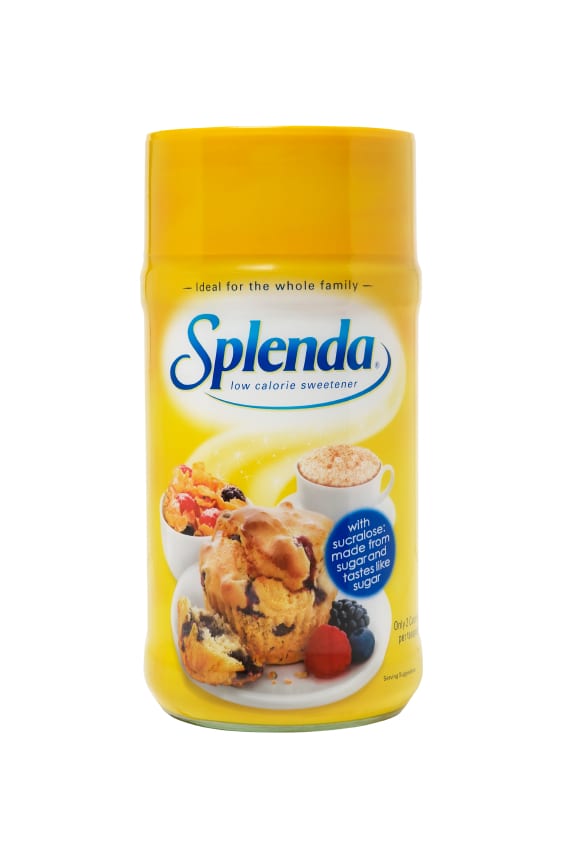
Another possible, if not additional explanation, is that some artificial sweeteners appear to decrease beneficial bacteria in the gut- thus triggering inflammation responses that promote insulin resistance, fat storage and weight gain.[31,32,33] Antibiotics are widely used in the meat production industry because the changes they elicit in the stomach bacteria of the chickens, cows and fishes that consume them make them gain weight faster. (See my article on Eating Chicken- What You Need To Know) By changing the intestinal bacterial environment in our stomachs, artificial sweeteners could be having he same effect on those using them regularly as a ‘healthy’ sugar substitute.[31,32] This phenomenon was observed in animal studies using the most widely used artificial sweetener, sucralose (Splenda) and in amounts far under the FDA Acceptable Daily Intake of 2.3 mg per pound of bodyweight.[31] More studies are needed to follow up, but from what we understand about the importance of balance with regard to intestinal microflora, it is indeed cause for concern.
3 Artificial Sweeteners Can Make You Eat More

Sweet tasting foods stimulate appetite and make us eat more- it’s a fact that studies have found to holds true whether that sweet taste is delivered by sugar or non-nutritive/artificial sweeteners. [34] Studies with artificial sweeteners consistently show that they increase subjective hunger ratings more so than sugar[35,36] and that they increased motivation to eat. [37] We are by nature designed to expect a certain caloric presence associated with sweet tasting foods and drinks- and while the ingestion of an artificial or non nutritive sweetener stimulates the parts of our brain associated with calories- the actual calories themselves are absent. Sweetness, removed from caloric content stimulate appetites and increases food seeking behavior. Our sense of satisfaction from consuming a food comes not only from its taste- which stimulates reward pathways- but from the energy it yields as well.[34,38] Thus you are more likely to eat more after consuming an artificially sweetened food or beverage- the opposite of what most consumers focused on either losing weight or maintaining their weight would find desirable- but a perfect scenario for food manufacturers. Far from reducing the market share for their other products, aggressive use of artificial sweeteners serves to drive up sales of their other foods and beverages. Keep in mind that the burst of artificially sweetened foods has not only failed to decrease in overall obesity in the United States[39], it has also not lead to a decline in the purchases of other sugary food products. On the contrary, sales of sugary beverages continue to rise worldwide- even in countries outside of the US such as France and the U.K.[40] The analogy I like to make is like that of a drug dealer whose clientele have become aware of the hazards of their drug use and would like to stop using their product but are unable to do so. The dealer then cashes in on the market for new drugs to help people get off of the drugs he is selling- except one of the side effects is that it makes you use more of the very drug you were trying to avoid in the first place. A win-win situation for the dealer, but not at all a god position for the consumer. Which leads to the next way that artificial sweeteners can make you gain weight.
4. Artificial Sweeteners May Be Mildly Addictive
One common observation I have made over the years is that those who regularly drink diet sodas tend to have difficulty stopping. The argument that the diet sodas serve as their fix- a way towards satisfying their sweet tooth and that it is ‘all that they have.’ It sounds like a pretty convincing train of thought, however the idea that humans need food and drink sweetened with anything flies in the face of millions of years of evolution. By design, we are adapted to do just fine with sugars from fruit and vegetables (and human breast milk during infancy)- all other sources of sugar fall into the category of want, not need, which brings us to the idea that artificial sweeteners, like sugar, can be addictive. The reward system that drives us to eat certain foods works the same way for many other pleasurable activities such as sex and drug use[41,42] and it can also bring about the same behavioral patterns such as cravings, bingeing or exercise addiction.[42] Many of us can attest to the fact that when you go for a really long time without eating a sugary food or drink that you enjoy that if you begin consuming it again you are apt to go a bit overboard. This bingeing behavior isn’t a matter of poor self-control, it’s the simple biological reality of how we are wired. It’s also one of the reasons moderation isn’t realistic when dealing with foods that are high in sugar, salt or fats as we have far less control over your food intake than most would like to think.[42] Artificial sweeteners do not activate the reward centers of our brain in quite the same way as sugar, but studies show that sweet tasting foods may affect cortisol secretion and compensate for feelings of stress. [43] Which is why many people turn to sweet tasting food and drink after a hard day at work, and artificially sweetened products as well since they activate the insula, orbitofrontal cortex and amygdala- taste centers in the brain that can lead to addictive behavior.[44]
5. Artificial Sweeteners Make You More Prone To Eating Sugary Foods

One of the most well documented aspects of food related behavior is that repeated exposure trains flavor preference.[34] Simply stated, the more you eat a food or drink a drink with a particular flavor, the more inclined you are to have an intense desire for that flavor.[45,46] This holds true for salty foods, fatty foods or sugary ones and it’s a fact that is very well known to food corporations bent on ensuring steady sales of their products. Research shows that as much as we may feel like we can’t live without the taste of a salty food or a rich fatty one, if intake is systematically decreased over the course of several weeks, we develop a preference for lower levels of that particular flavor.[34,45,46] Repeated use of artificial sweeteners thus encourages sugar dependence and thus increases the likelihood of eating the very low nutrient and empty calorie sugary products which are so easy to overeat. It’s a downward spiral as the individual bent on kicking his or her sugar cravings, consumes more artificially sweetened products to get his or her fix, but in so doing become less likely to resist the allure of sugary foods. A scenario which works perfectly for corporate profit margins but one that leaves the consumer confused as to why they aren’t losing weight and questioning their willpower because of their inability to resist sugary foods.
We should also note that many foods sweetened with artificial sweeteners still retain high calorie counts and can be misleading when marketed as being healthier because they are sugar free. Sugar is only one source of calories in foods like yogurt, ice cream and frozen desserts- so making them sugar free creates only a minor reduction in calories as fats and (to a lesser extent) proteins make up most of its energy content.[47] Food corporations also often add gels, maltodextrins(another processed simple sugar) and increase the fat content of products that are artificially sweetened, thus while it may be marketed as being healthier- the calorie difference isn’t always that substantial relative to the regular, sugar sweetened product. [48] That being said, the focus for weight loss and healthy living in general should never be centered around products that have no place in our ancestral diet as we can’t engineer our way out of overeating- and we should be aware that no major food corporation is going to go out of their way to help us do so. (See my article- The Economics of Obesity). Instead it’s up to us to focus on lifestyle changes and learning to do without and adapt to natural and less extreme taste sensations from high fiber, fruits and vegetables as opposed to substituting non-nutritive sweeteners to replace added sugar in processed products. It’s not easy, but given the numerous potential hazards of artificial sweeteners and high consumption of sugary, low nutrient foods, it’s a path you have to take if you are serious about long term weight loss and overall health. Fruits and vegetable growers don’t have the same budget parameters as the makers of processed foods so an apple or a carrot may not seem as sexy as diet soda or artificially sweetened chewing gum, but it’s a way of eating that has helped humans maintain healthy body weights without increased incidences of obesity for millions of years. So give it a try!
High Intensity Bodyweight Training: Ballistic Pushups & Dips!
This was a tough one!
Starts out with ballistic push ups (like clap pushups but without the clap as my wrist is still not 100%) nonstop for 20 reps, then all out on dips for 10 reps.
To say it was painful would be an understatement, but you just have to push through and keep on going.
Still training, hope you are too and as always, Excelsior!!! #naturallyintense
#hometraining #homeworkout #homeworkout #highintensitytraining #naturalbodybuilder #naturalbodybuilding #fitover40 #naturalbodybuildingvideos #chestday #chesttraining #naturalbodybuildingtips #pushups #dips #bodyweighttraining #highintensitytrainingtips #drugfreebodybuilding #calesthenics
Kevin's Unconventional Biceps Training- 3-6 Minutes a Week!
In this video I go over my biceps training using the Naturally Intense High Intensity Training protocols that helped me go from having arms measuring 11.5 to 12 inches to 18 inches drug free!
It's an unconventional approach for certain, but it's one that's helped my arms grow and the hundreds of men and women I have trained over the past 30 plus years.
Now, my success isn't due to being genetically gifted, as it took me the better part of 11 years to get my arms up to those measurements.
Which is significant as it works and been been proven time and time again to work for the average man or woman trying to grow their arms without drugs.
It's my hope that these high intensity training protocols can help you as much as they helped me!
Click on my bio link to see the full video on my YouTube channel and thanks as always for taking the time to look at my work!!! Excelsior!!! #naturallyintense
#highintensitytraining #naturalbodybuilder #naturalbodybuilding #fitover40 #naturalbodybuildingvideos #armworkout #bicepsworkout #naturalbodybuildingtips #biceps #armtraining #highintensitytrainingtips #drugfreebodybuilding #barbellcurls
At the Lancaster Classic Day 2 Elimination Rounds Against European Champion, and World Record Holder Leo Pettersen @leo_barebow_archer
I don't talk much about it but I'm also a competitive barebow archer (surprise!) and last Saturday I had the honor of making it to Day 2 at the Lancaster Archery Classic in the Barebow Division, as I made the top 64 out of 267 competitors and had a chance to shoot with some of the greatest barebow shooters on the planet!
I didn't make it past Leo, but it was a real rush to be there and a huge thanks to my coach, Joe MyGlyn @prolinearchery for helping me get there.
Thanks as well to my good friend @sean_chan33 for all of his help from the very start, to my line buddy Aaron Shea for taking the shot and showing up to support!
My thanks as well to rob_kaufhold for putting on and promoting one of the best archery tournaments on earth!
Thanks also to to everyone who took the time to send a supporting word and I am looking forward to next year!!! #naturallyintense #barebow
#lancasterclassic #lancasterarcheryclassic2024 #lancasterarchery #archery #fitover40 #barebowrecurve #targetarchery
Dumbo, Brooklyn circa 2004
This shot was taken as part of the promotion for my Naturally Intense DVD and was about a year after my last bodybuilding competition.
It was a grueling photoshoot.
We started at about 10 am and finished around 4pm and I was completely spent, but the more we shot the sharper I looked, so we kept on going.
It's nice to look back from time to time and as tired as I was, we all had a blast!
My thanks to @stephanie_corne_artwork, @https://pulse.ly/itgnag2dec and @ftaz1 for taking the shots!!!
Thanks for watching and as always, Excelsior!!! #naturallyintense
#naturalbodybuilder #naturalbodybuilding #throwback #fifthavenuegym #5thavenuegym #drugfreebodybuilding #naturalbodybuildinglifestyle #gymlife #gymmotivation #naturalbodybuildingmotivation #bodybuilding #blackandwhite #instablackandwhite #bnw
Can You Build An Impressive Physique Training Only At Home?
Absolutely!
I stopped training in commercial gyms as of March 2020 and have been training at home ever since.
Initially I was admittedly worried that I might lose some of my gains or not make as much progress, but that certainly wasn't the case.
I've consistently continued to improve with my high intensity workouts and muscles have no idea where they are training.
As long as the criteria of adequate intensity and overload are met, there will be an adaptive response and your muscles will get bigger and stronger.
So don't worry at all about where you train, focus instead of what will be the best way for you to always be training!
Thanks for watching and as always, Excelsior!!! #naturallyintense
Kevin's Three Day Training Spilt!
For the past 33 years I have trained three times a week with Naturally Intense High Intensity Training workouts lasting 10, 15 to 20 minutes max.
It's a training split tried and testes not only in it's helping me realize my goal of becoming a successful natural bodybuilder, but it's also helped hundreds of men and women over the past three decades.
I have tested just about every possible training split imaginable and for this particular style of high intensity training, this particular grouping consistently yields fantastic results.
I hope it helps you as much as it's helped me over the years and thanks so much for taking the time to look at my work.
Keep training hard and Excelsior!!! #naturallyintense
Excelsior!!! #naturallyintense
#trainingsplit #3daytrainingsplit #threedaytrainingsplit #naturalbodybuilding #naturalbodybuilder #naturalbodybuildingvideo #naturalbodybuildingmotivation #naturalbodybuildingtips #drugfreebodybuilding #bodybuilding #highintensitytraining #highintensitytrainingtips
405 Stiff Leg Deadlift for 7 Reps! High Intensity Training.
First leg workout of the year and already pushing it!
I haven't done a stiff leg deadlift over 315lbs for about 3 years at this point, and I did my last set with 315lbs and comfortably got to 10 reps and decided I had far too much gas left in the tank and that I should go up in weight.
So I did.
I figured I might get a solid 6 reps in, but I made it to 7 and I think I could have gone on to get a full 10 reps BUT that's when good judgement prevailed.
As a bodybuilder having not trained this heavy for so many years, the shock of this much weight would be more than enough to stimulate muscle growth, and doing more reps wouldn't yield any greater returns, only increase the likelihood of injury.
It's not about the numbers, it's about training to a point where you achieve your goal, and it's important to have a goal in mind as a bodybuilder based on increasing muscle mass rather than hitting a particular number.
Besides, if in my 20's I never did more than 405lbs on a stiff leg deadlift, it doesn't make any sense going heavier than when I am almost 50!
Could I deadlift more at this point?
Absolutely but just because you can doesn't mean you should!
So keep those weights in a good working range, keep it safe and as always Excelsior!!! #naturallyintense
#hometraining #homeworkout #homeworkout #roguerack #highintensitytraining #naturalbodybuilder #naturalbodybuilding #fitover40 #naturalbodybuildingvideos #backworkout #naturalbodybuildingtips #backtraining #highintensitytrainingtips #drugfreebodybuilding #fitoverforty #deadlift
Turning 50 in a few months...
Not much of a big deal for me as I still feel pretty much the same but I hope that my example helps show what can be done with a lifetime commitment to eating well and training consistently!
Thanks for coming along on the journey and as always, Excelsior!!! #naturallyintense
#naturalbodybuilder #naturalbodybuilding #healthylifestyle #fitover40 #drugfreebodybuilding #naturalbodybuildingmotivation #natty #fitness
Related Articles:
Understanding Calories and Weight Loss
Glycemic Index and Weight Loss
101 Realistic Ways To Lose Weight
How The Food Industry Makes You Overeat- The Economics Of Obesity
Please note that all material is copyrighted and DMCA Protected and can be reprinted only with the expressed authorization of the author.
Click To Get A Copy Of Kevin’s Free Ebook On The Role Of Exercise In Reducing Abdominal Fat!
Featured everywhere from the Wall Street Journal to network TV, Kevin Richardson is the international fitness consultant for UNICEF, natural bodybuilding champion, creator of Naturally Intense High Intensity Training and one of the top personal trainers in New York City.
References For 5 Ways Artificially Sweetened Foods Can Make You Gain Weight
1. Mintel. Ingredient Trends – US – December 2004 – Market Research Report.
2. Mattes RD, Popkin BM. Nonnutritive sweetener consumption in humans: effects on appetite and food intake and their putative mechanisms. Am J Clin Nutr. 2009
3. IRI Consumer Report 2009
4. Popkin BM, Nielsen SJ. The sweetening of the world’s diet. Obes Res. 2003
5. Schulze MB,Manson JE, Ludwig DS, Colditz GA, Colditz MJ, Willett WC, et al. Sugar sweetened beverages, weight gain, and incidence of type 2 diabetes in young and middle-agedwomen. JAMA. 2004
6. Saris WHM. Sugars, energy metabolism, and body weight control. Am J Clin Nutr.2003
7. Bellisle F, Drewnowski A. Intense sweeteners, energy intake and the control of body weight. European Journal of Clinical Nutrition 2007
8. Hoon MA, Adler E, Lindemeier J, et al. Putative mammalian taste receptors: a class of taste-specific
GPCRs with distinct topographic selectivity. Cell. 1999
9. Bachmanov AA, Li X, Reed DR, et al. Positional cloning of the mouse saccharin preference (Sac)
locus. Chem Senses. 2001
10. Nelson G, Hoon MA, Chandrashekar J, et al. Mammalian sweet taste receptors. Cell. 2001
11. Cordain L, Eaton SB, Sebastian A, Mann N, Lindeberg S, Watkins BA, O’Keefe JH, Brand-Miller J. Origins and evolution of the Western diet: health implications for the 21st century. Am J Clin Nutr. 2005
12. Swithers SE, Baker CR, Davidson TL. General and persistent effects of high-intensity sweeteners on body weight gain and caloric compensation in rats. Behav Neurosci. 2009
13. Swithers SE, Martin AA, Davidson TL. High-intensity sweeteners and energy balance. Physiol
Behav. 2010
14. Hoon MA, Adler E, Lindemeier J, et al. Putative mammalian taste receptors: a class of taste-specific
GPCRs with distinct topographic selectivity. Cell. 1999
15.Fowler SP, Williams K, Resendez RG, et al. Fueling the obesity epidemic? Artificially sweetened beverage use and long-term weight gain. Obesity 2008
16. Blum JW, Jacobsen DJ, Donnelly JE. Beverage consumption patterns in elementary school aged children across a two-year period. J Am Coll Nutr. 2005
17. Lutsey PL, Steffen LM, Stevens J. Dietary intake and the development of the metabolic syndrome: the Atherosclerosis Risk in Communities study. Circulation. 2008
18. Dhingra R, Sullivan L, Jacques PF, et al. Soft drink consumption and risk of developing cardiometabolic risk factors and the metabolic syndrome in middle-aged adults in the community. Circulation. 2007
19. Nettleton S, Woods B, Burrows R, Kerr A. Food allergy and food intolerance: towards a sociological agenda. Health (London). 2009
20. Ludwig DS, Peterson KE, Gortmaker SL. Relation between consumption of sugar-sweetened
drinks and childhood obesity: a prospective, observational analysis. Lancet. 2001
21. Brown RJ, de Banate MA, Rother KI.Artificial Sweeteners: A systematic review of metabolic effects in youth. Int J Pediatr Obes.Epub 18 Jan 2010
22. Forshee RA, StoreyML. Total beverage consumption and beverage choices among children and adolescents. Int J Food Sci Nutr. 2003
23. Blum JW, Jacobsen DJ, Donnelly JE. Beverage consumption patterns in elementary school aged children across a two-year period. J Am Coll Nutr. 2005
24. Berkey CS, Rockett HRH, FieldAE, Gillman MW, Colditz GA. Sugar-added beverages and adolescent weight change. Obes Res. 2004
25 Fowler SP, Williams K, Resendez RG, Hunt KJ, Hazuda HP, Stern MP. Fueling the obesity epidemic? Artificially sweetened beverage use and long-term weight gain. Obesity. 2008
26. Stellman SD, Garfinkel L. Artificial sweetener use and one-year weight change among women. Prev Med. 1986
27. Schulze MB, Manson JE, Ludwig DS, et al. Sugar-sweetened beverages, weight gain, and incidence of type 2 diabetes in young and middle-aged women. JAMA 2004
28.Ludwig DS, Peterson KE, Gortmaker SL. Relation between consumption of sugar-sweetened drinks and childhood obesity: a prospective, observational analysis. Lancet. 2001
29. Swithers SE, Davidson TL. A role for sweet taste: calorie predictive relations in energy regulation
by rats. Behav Neurosci. 2008
30. Pepino YM, Bourne C. Nonnutritive sweeteners, energy balance and glucose homeostasis. Curr Opin Clin Nutr Metab Care. 2011
31. Vijay-Kumar M, Aitken JD, Carvalho FA, et al. Metabolic syndrome and altered gut microbiota in mice lacking Toll-like receptor 5. Science. 2010
32. Backhed F, Ding H, Wang T, et al. The gut microbiota as an environmental factor that regulates fat storage. Proc Natl Acad Sci U S A. 2004
33. Abou-Donia MB, El-Masry EM, Abdel-Rahman AA, et al. Splenda alters gut microflora and increases intestinal p-glycoprotein and cytochrome p-450 in male rats. J Toxicol Environ Health. 2008
34. Yang Q. Gain weight by “going diet?” Artificial sweeteners and the neurobiology of sugar cravings. Neuroscience 2010
35. Black RM, Leiter LA, Anderson GH. Consuming aspartame with and without taste: differential effects on appetite and food intake of young adult males. Physiol Behav.1993
36. Blundell JE, Hill AJ. Paradoxical effects of an intense sweetener (aspartame) on appetite. Lancet. 1986
37. Rogers PJ, Carlyle JA, Hill AJ, Blundell JE. Uncoupling sweet taste and calories: comparison of the effects of glucose and three intense sweeteners on hunger and food intake. Physiol Behav. 1988
38. Erlanson-Albertsson C. How palatable food disrupts appetite regulation. Basic Clin Pharmacol Toxicol 2005
39. Bray GA, Nielsen SJ, Popkin BM. Consumption of highfructose corn syrup in beverages may play a role in the epidemic of obesity. Am J Clin Nutr 2004
40. Volatier JL, Verger P. Recent national French food and nutrient intake data. Br J Nutr 1999
41. Small DM. Toward an understanding of the brain substrates of reward in humans. Neuron. 2002
42. Avena NM, Rada P, Hoebel BG. Evidence for sugar addiction: behavioral and neurochemical effects of intermittent, excessive sugar intake. Neurosci Biobehav Rev. 2008
43. Epel E, Lapidus R, McEwen B, Brownell K. Stress may add bite to appetite in women: a laboratory study of stress-induced cortisol and eating behavior. Psychoneuroendocrinology 2001
44. Haase L, Cerf-Ducastel B, Murphy C. Cortical activation in response to pure taste stimuli during the physiological states of hunger and satiety. NeuroImage. 2009
45. Liem DG, de Graaf C. Sweet and sour preferences in young children and adults: role of repeated exposure. Physiol Behav. 2004
46 . Bertino M, Beauchamp GK, Engelman K. Long-term reduction in dietary sodium alters the taste of salt. Am J Clin Nutr. 1982
47. Drewnowski A. The role of energy density. Lipids 2003
48. Ireland-Ripert J, Favier JC, Tanneau X, Feinberg M. Repertoire general des aliments. Tome 5 Aliments de marque. Paris: Lavoisier Tec & Doc 1997


